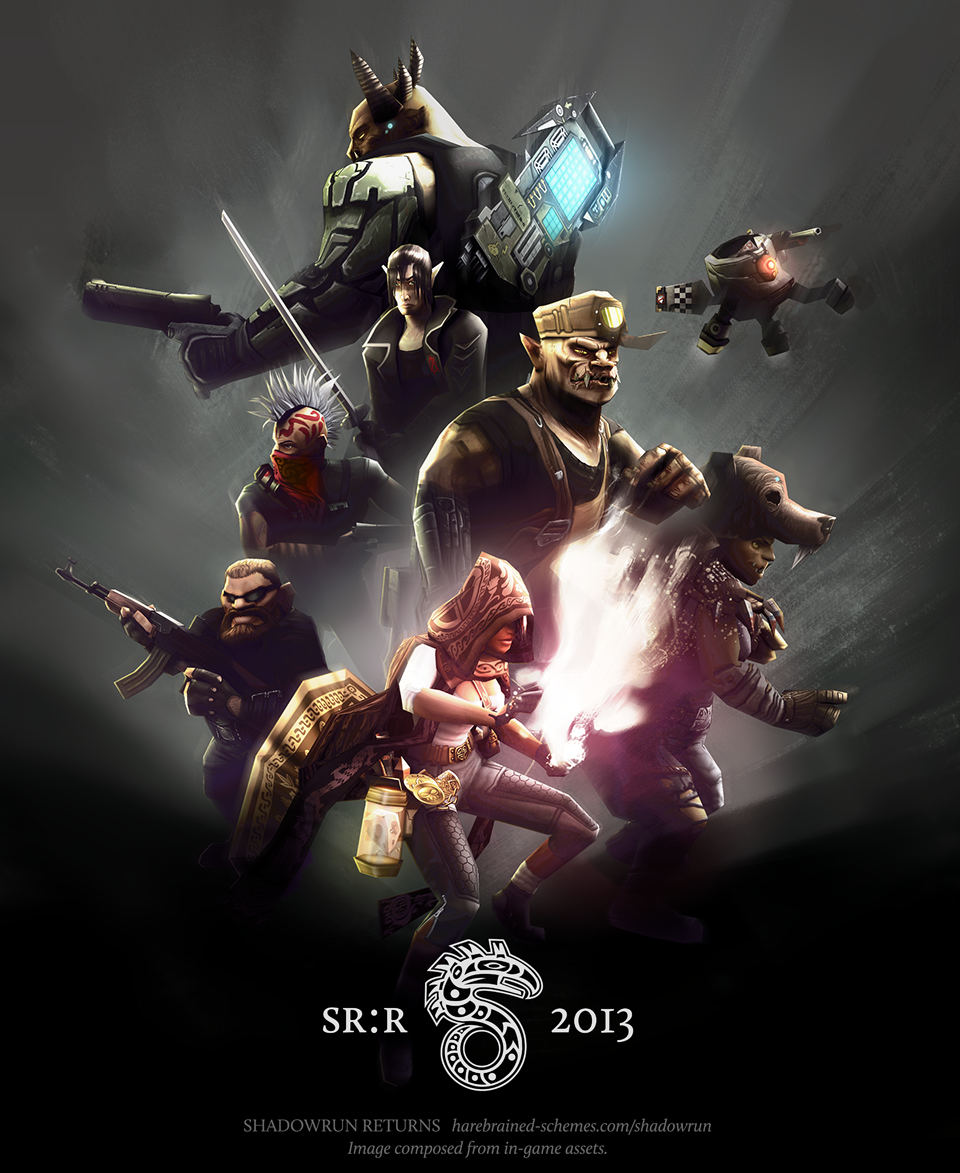REVIEW - SHADOWRUN RETURNS
Shadowrun Returns is
an experience highly recommended to anyone patron of both role playing games
and video games – or anyone who considers themselves a fan of noir detective
mysteries. As role playing aficionados will be well aware, Shadowrun is the cyberpunk-fantasy
role playing system. Now in its fifth edition (twenty five years old!), this
game has a solid reputation and loyal fan base. Shadowrun Returns is the result of a phenomenally successful Kickstarter campaign led by Jordan Weisman – one of the team who
originally developed the Shadowrun role playing system. Through crowd-funding Weisman was able to raise $1,836,447
towards this game. Needless to say, expectations were very high.
I, however, have learned all of this since playing the game.
My introduction to it involved reading a Game
Informer preview which sparked my interest and then playing it a few months
after its release. My interest in the setting has since expanded rapidly – I am now
reading the fifth edition rules of Shadowrun
with a mind to the run the game sometime in the future. Why am I telling you
all of this and not actually talking about the video game? Because I want you to
get an idea of just how awesome I find this setting. I greatly enjoyed the intricately
woven plot of Shadowrun Returns and
found the game’s art to be extremely impressive. Although the story is
wonderful and the game is beautiful visually and mechanically it features some
flaws which I hope to see rectified in its upcoming expansion Dragonfall.
Shadowrun Returns’ strategic, turn-based mode of play leaves
plenty of time for the player to appreciate the lovingly crafted isometric
world, which is peppered with details. Visually it cannot be faulted. Many elements
of the game betray its progression from pen and paper to video game – in fact
if you have experienced table top role playing you may notice that Shadowrun Returns is not so much a video
game as a highly sophisticated single player role playing simulator. For
example, instead of providing animation for all character interaction scenes
and close-ups the camera will remain at a fixed third person distance and a
detailed description of what is happening in the scene will be provided. This
may not suit all players, but as someone who loves reading and appreciates the
power of the imagination this is a really excellent approach to communicating
story. An great original score accompanies this action.
The combat is fantastic. Challenging and highly engaging,
the turn based system requires constant attention and forethought. The game is
balanced so that when you craft a team of runners to accompany your character
on missions your choices actually matter. An impressive variety of accomplice runners
are provided, all with unique skill sets. As a cyberpunk-fantasy setting, Shadowrun Returns features magic, guns,
melee and tech-based combat. In every combat it is beneficial to have a variety
of these fighting styles in your party and in many of the later missions it is
necessary. The challenging nature of the combat results in a highly immersive
game experience.
The experience system is another area which provides a link
to Shadowrun Returns’ tabletop past.
Your character receives ‘karma’ for deeds they complete which is then spent on
a skill tree. There are six main attributes and various skills you can enhance
under each attribute. However, even if you receive the maximum amount of karma
that the game allows it is impossible to create an overpowered,
jack-of-all-trades style character which makes your karma distribution
decisions meaningful.
Despite
all these positive features the game has a few
drawbacks. Minor ones include the fact that you can only save your game
at pre-designated intervals, the lack of discoverable side missions and
loot on
the maps and the large amount of unexplained Shadowrun jargon
included – an in
game glossary would have been useful for people coming to the game who
were unfamiliar with the role playing setting. However, the most
prominent problem
with the game was railroading. For any unfamiliar with the term
‘railroading’
describes an in-game situation where the player appears to have several
options
however, all but one of the these choices will be meaningless and the
player
will always be directed to the pre-designated choice that the designer
wanted
the player to make. Railroading in a game results in a lack of
difficulty (and
therefore a lack of engagement) for the player. In Shadowrun Returns a
veritable wealth of dialogue and story options are provided throughout. However
they are somewhat cheapened by the fact that most of these choices do not trigger
any real consequences for the player. It is always too obvious what you have to
do next. The plot remains intriguing but feels more like reading a novel than
making choices in a game.


